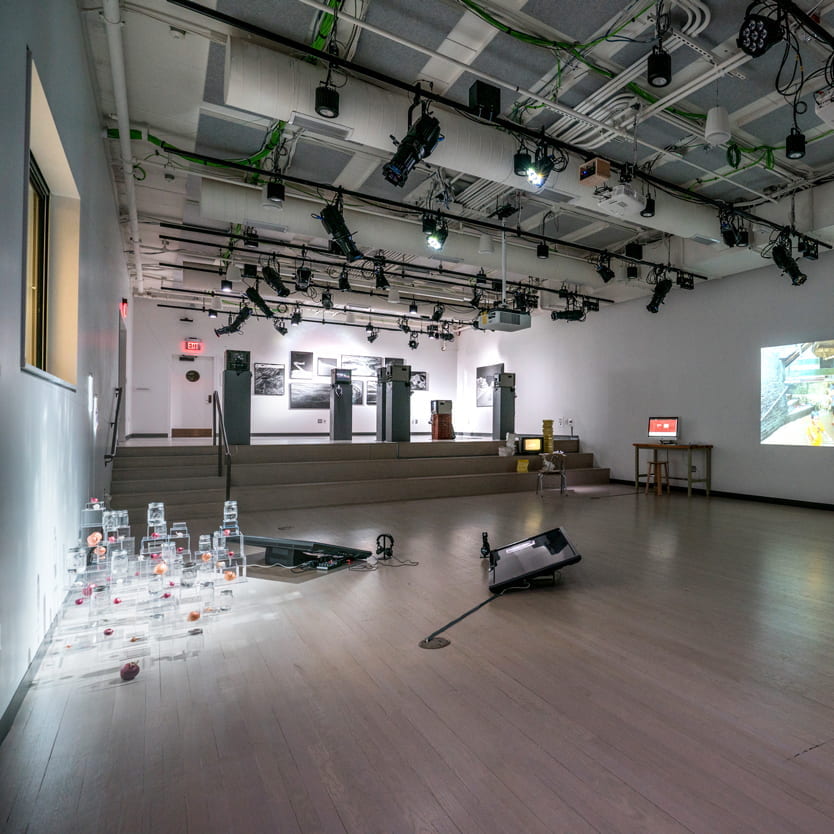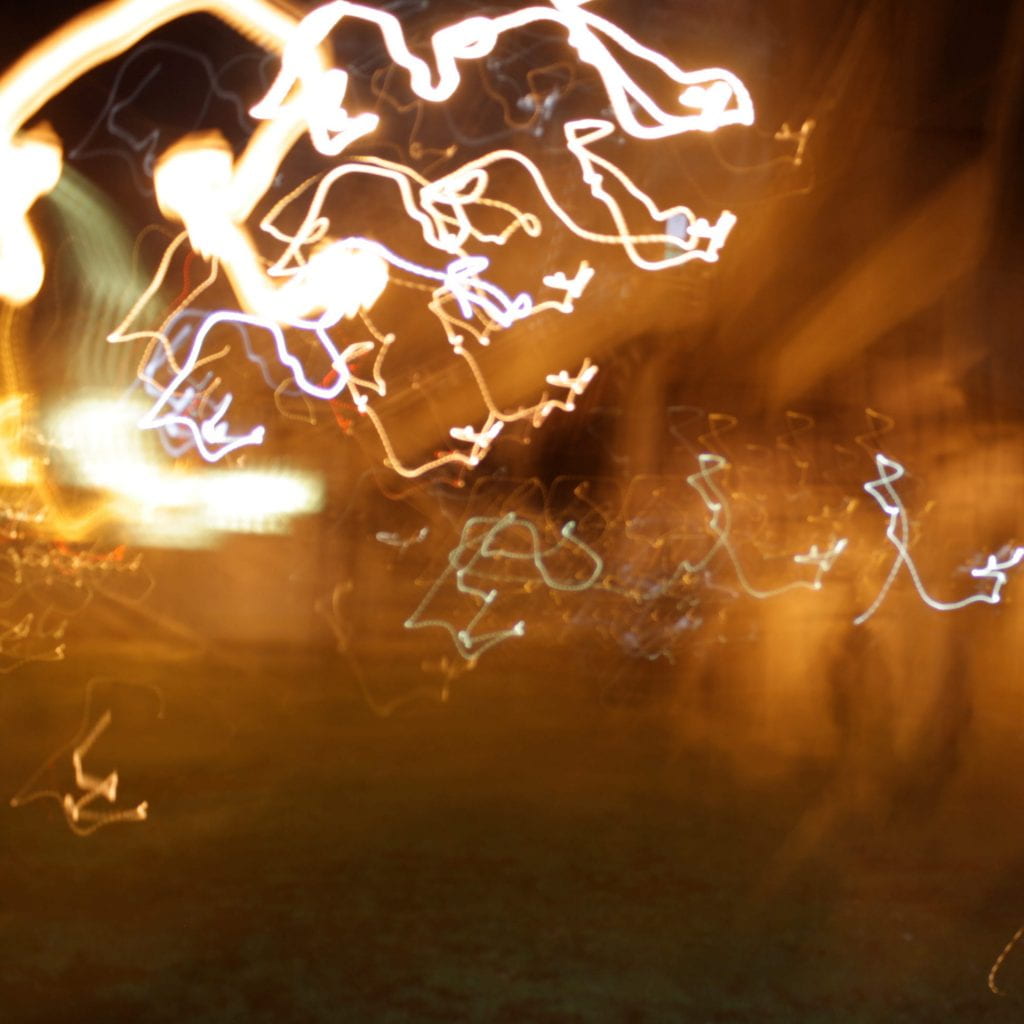On April 25, the Critical Media Practice secondary field opened its inaugural Capstone Exhibition entitled “Into Place.” The exhibition, comprised of a cinema program and a group gallery show, presented a range of works from sound projects and short videos to multi-channel installations and performances. This show was the first time graduate students from across the University have collectively exhibited their CMP work, which tackles scholarly inquiry through visual, aural, tactile, performative, and interactive means.
CMP students who participated in the show represented a variety of disciplines including Anthropology, Comparative Literature, Music, and Visual and Environmental Studies. Several alumni of the CMP program were invited to present past projects alongside current students; it was exciting to see the work side-by-side while also creating a dialogue between CMP students and the alumni, who now hold teaching and professional positions and could share advice and experience for the graduating students. We look forward to inviting alumni back to present their work in future exhibitions.
In addition to the experience of creating the capstone projects, CMP Administrative Director Julie Mallozzi highlighted the value of mounting an exhibition from scratch: “It’s a great opportunity for the students to learn how to install the work, to see how the audience interacts with their projects, and to create professional documentation. It is all part of the learning experience.” With a packed opening night, the exhibition also served as a wonderful way to spread the word about the CMP program.

The gallery show of “Into Place” was held in the ArtLab Annex in the Sackler BuildingCMP student Lindsey Lodhie (Visual and Environmental Studies ’20) participated in the gallery show with her installation “Artificial Tears,” which explores the aesthetic interface where research protocols, performance reenactment, and genre film intersect in laboratory studies of emotion. Taking the ostensible substance of affect—tears—as a concrete site of symbolic and material investigation, “Artificial Tears” seeks to unravel what Bruno Latour has described as the “scenography of empiricism.”

Joseph Pomp (Comparative Literature ’20) created a sculptural installation which outlined the city of Manhattan in a personal atlas of the movies. He drew inspiration from works by Juan Downey and Thom Andersen that use video to question prevailing (mis-)conceptions of geography. “Manhattan Video” restitutes film clips to their shooting locations and, in so doing, detects how the specificities of place bear their imprint across wildly divergent works.

T. Brandon Evans (Visual and Environmental Studies ’20) presented a perforative installation titled “Tāli/Khāli (Empty Beat.” Brandon aka Bunty Singh uses a concept of rhythm (tāla) from Hindustani classical music and Sikh music traditions as an operation on the dynamics of live performance and vernacular media in the Punjabi and diasporic Sikh community. The conspicuous absence of the performer is articulated in the operation of media transmission. Absence emphasizes the notion that creative processes are not, as in Sikh religious thought and in process philosophy, the products of human agency, but rather inflorescences of the Divine.

harmonium, cloth, shoe rack, microphone PA system, doorbell, found objects
Benny Shaffer (Anthropology ’20) presented his 9-channel installation “Elsewhere” in the Lightbox Gallery at the Harvard Art Museums. “Elsewhere,” depicts the floating life of a Uyghur tightrope walker as he performs on the margins of China’s entertainment industry. The precarity of his work points to a broader context in which Uyghurs, a largely Muslim ethnic minority, are continually subjected to discriminatory policies under the Chinese government. This video installation reflects on the relationship between spectacle, surveillance, and mediation in contemporary China.

Argyro Nicolaou (Comparative Literature ’18) presented both a performative lecture in the cinema program and a complimentary installation in the gallery show titled “History Lesson.” In “History Lesson” Nicolaou proposes an alternative history curriculum for Cyprus based entirely on film productions shot on the island before its division in 1974.

With the success of “Into Place” we look forward to organizing future events, exhibitions, and opportunities for students in Critical Media Practice to share their works with the Harvard community and beyond.


